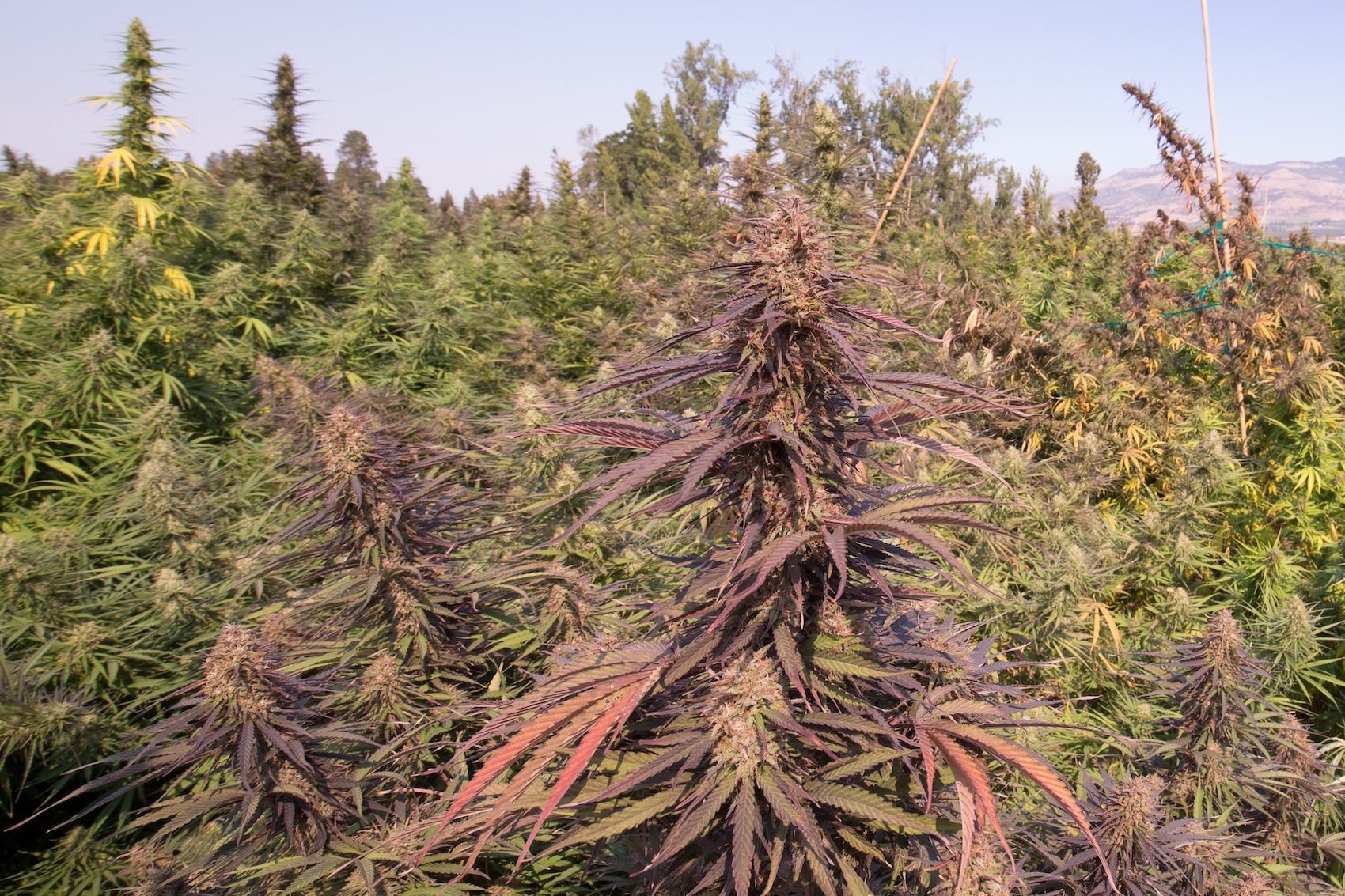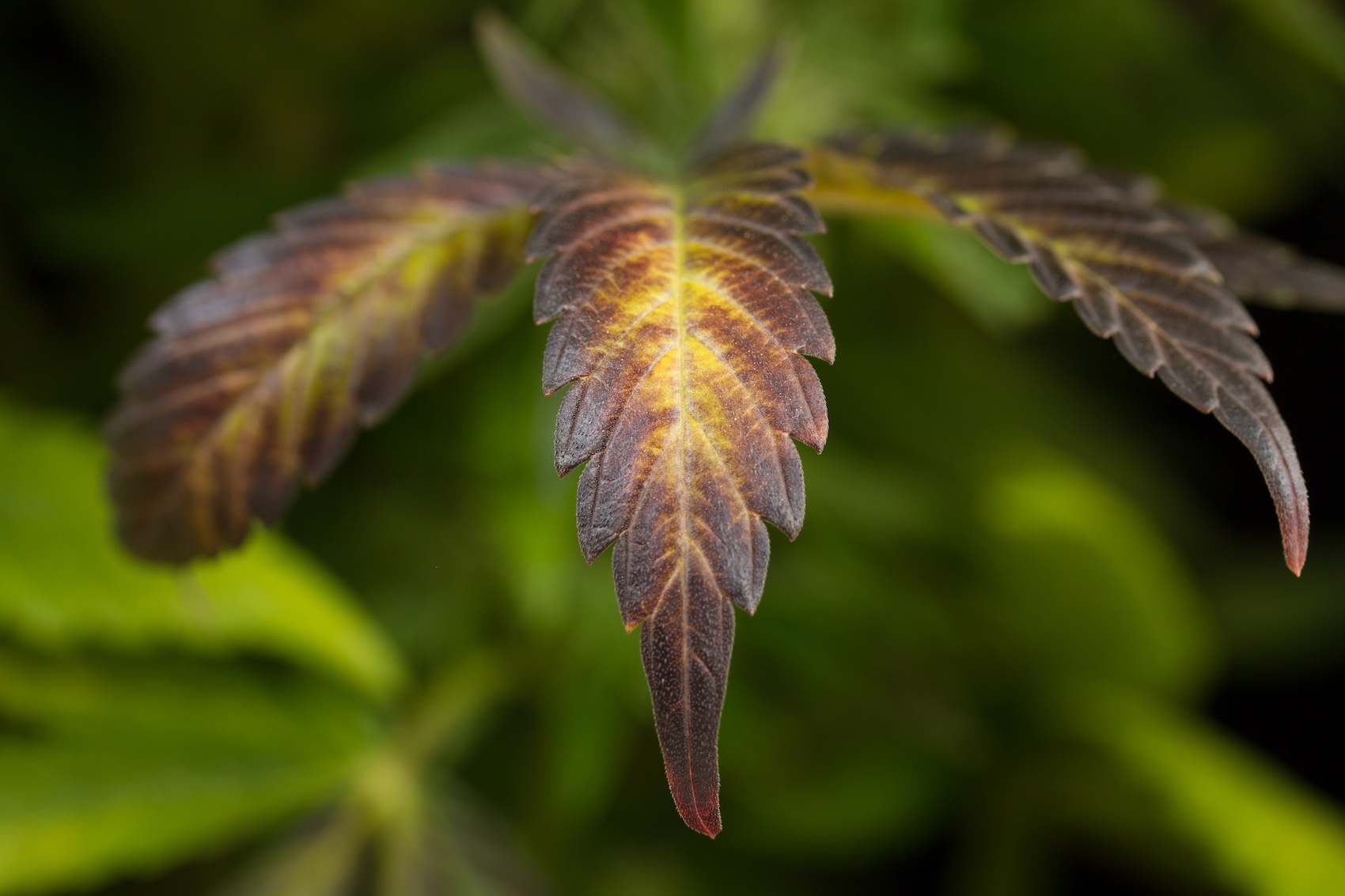- Hop latent viroid (HLVd) is spreading rapidly through cannabis plants, posing a serious threat to growers.
- It is estimated that 90% of the cannabis farms in California are infected with this pathogen which can destroy the value of whole crops.
- But a recent scientific breakthrough is offering a glimmer of hope for the affected growers who are suffering from this "COVID of the cannabis world".

It is a fact that cannabis has faced many viral infections over millions of years. Due to the emergence of certain viruses and viroids, some cannabis strains mutated, generating genetic changes over time which altered the evolution of the plant.
And this is also happening right now. While humans fight against COVID, cannabis plants face an equally devastating threat: Hop latent viroid (HLVd), a viroid normally found in hop crops which in recent years has jumped to cannabis, destroying the yields of infected plants.
But this is really no surprise. Hops (Humulus lupulus) and Cannabis sativa are like first cousins in botanical terms. Both plants belong to the same family, known as Cannabaceae. Despite their differences in terms of use and appearance, they share certain genetic and biochemical characteristics that place them on the same botanical branch.
It was widely assumed that HLVd's jump from hops to cannabis was the result of the attempts to cross both plant species. This assumption is based on the fact that the only known method of HLVd transmission is by mechanical infection.
In addition, viroids are only replicated in plants. While viruses are more complex than viroids (they're composed of a protein capsule that wraps their genetic material), viroids are made up of only short strands of RNA, so they cannot be sustained without a host plant.
This means that HLVd doesn't have any known effects on human health, although it can contribute to dramatically decreasing the weight, performance, and final yield of cannabis. In fact, current estimates suggest that this 'dudding disease' ('dudding' refers to a phenomenon in which cannabis plants show stunted or limited growth) may decrease the production of cannabinoids like tetrahydrocannabinol (THC) and cannabidiol (CBD) between 40 and 50%.
HLVd causes plants to produce smaller flowers and much less THC. After observing with an electron microscope, HLVd has been perceived to cause ripe trichomes (where most of the THC is found) to look like a deflated balloon rather than their normal ball shape. Such a decrease in production reduces the value of crops and results in significant financial losses for cannabis growers: a study has estimated an annual return loss of $4 billion in the US alone.
Since 2019, when it was first detected in marijuana plants in California, HLVd has managed to spread rapidly to cannabis plantations across the United States. A 2021 survey found that 90% of the cannabis growing sites surveyed in California had at least some infected plants, and around 30% of the plants in crops infected by HLVd also showed viroid symptoms. More recently, experts have estimated that 25-50% of all cannabis plants in the United States and Canada have HLVd.

How is HLVd spreading so quickly?
As its name suggests, HLVd is latent, so infected plants may not show physical signs of viroids. Those plants that do have physical symptoms may exhibit stunted growth, small leaves, and brittle stems during the vegetative stage; or a reduction or underdevelopment of trichomes, a dull smell, or smaller buds in the flowering phase.
As the infected plants may not show any symptoms (and periodic testing is still uncommon), experts believe that HLVd has spread rapidly through infected clones. And not just between American states but also across the globe, so anyone who receives plants from the US (especially from California) probably has this viroid in their grow.
HLVd is also commonly transmitted via infected equipment (for instance, pruning tools) and through human contact from infected to non-infected plants. What's more, this viroid is likely to also spread through irrigation water and through the soil around the plants. And not only that: once a plant becomes infected with HLVd, it also becomes more susceptible to other diseases (a phenomenon that has led to HLVd being called the "COVID of the cannabis world").
What should cannabis growers do?
There is currently no cure for HLVd-infected cannabis plants. Although several private companies have developed possible cleaning processes to eliminate the viroid (sterilisation with a 10% bleach solution can reduce infection), the best form of defence against the spread of HLVd within a growing facility continues to be the implementation of sanitary measures and rigorous plant control.
In addition to sanitary measures, some growers have been working on reproductive mechanisms to create immunity (for example, by exposing the plants to small amounts of the virus, much like how a vaccine works); or to create resistance (e.g., by identifying and then spreading plants that are not infected with HLVd).
One of these methods consists in performing controlled crosses with plants that have been exposed to HLVd but have not been infected by it. Another technique involves cloning only healthy and virus-free mother plants. But cannabis growers could also consider planting certain cannabis strains that appear partially resistant to HLVd.
Scientists identify a hardy purple cannabis strain
For instance, a group of scientists from Medicinal Genomics, a firm with its headquarters in Massachusetts, announced in the summer of 2023 that they had accidentally discovered that one of their cannabis plants appeared to be partially resistant to HLVd. Scientists also noticed that the plant had turned purple whilst fighting the disease. This strain is Jamaican Lion, an award-winning and CBD-rich strain.
Scientists rubbed the viroid directly onto the cut leaves (an established method for infecting plants with diseases) and then injected the viroid directly into the plant. But it was at that point that they came across something truly astonishing.
One of their specimens, a cannabis strain called Jamaican Lion, didn't get infected. The team repeatedly exposed the plant to HLVd over the course of six weeks, but the plant never tested positive for the virus. Finally, scientists injected the viroid directly into the stem of the plant; but, even then, the disease seemed to infect only the roots and not any of the leaves.
Later on, the team noticed that the leaves and flowers of the infected plant were turning purple, whereas a second non-infected version of the same plant didn't change colour. They continued analysing the plant to detect HLVd, but 57 out of 57 tests on purple plant tissue were negative. The only leaves that ever tested positive for the virus were the green leaves on the lower part of the plant.

Scientists still don't know the reason why this happened, but it could be an immune response. What's clear is that it turned purple because of an increased production of anthocyanin (this is a plant chemical that can cause plants to turn this colour).
The research team believes that scientists should start determining if there are more purple plants that are resistant to HLVd, since the scientific literature has already linked anthocyanin production to the fight against viroids. This occurs in different plants and with different viroids, so these anthocyanins are clearly a known immune response.
Therefore, it seems that the long-term solution in the battle against HLVd is undoubtedly the development of highly resistant cultivars (perhaps with purple strains) that don't experience loss of yield or potency when facing the viroid. This is something that could certainly protect thousands of crops from this pathogen that is currently decimating the global production of marijuana.



Comments from our readers
There are no comments yet. Would you like to be the first?
Leave a comment!Did you like this post?
Your opinion about our seeds is very important to us and can help other users a lot (your email address won't be made public).